Smparticle2 - Untitled

More Posts from Smparticle2 and Others


Shortly after he finished filming on the opulent set of Baz Luhrmann’s ‘The Great Gatsby,’ Joel headed off to the Jordanian desert to begin training for 'Zero Dark Thirty.' With a heavy dose of mock horror, he said that it was quite a shock to his delicate system:
“An experience like ‘Gatsby’ really spoils you because you are treated like a king. You’re given a big trailer, someone brings fresh flowers to your trailer, there are dates and walnuts and coconut water in your fridge … really living large.“
Then, when he suddenly found himself roughing it in the torrid desert, “sharing a cubicle with five other guys, half of them military, and carrying 50-60 kilos of equipment … It was like, 'Baz! Come and save me!’ You get a reality check."

How we determine who’s to blame
How do people assign a cause to events they witness? Some philosophers have suggested that people determine responsibility for a particular outcome by imagining what would have happened if a suspected cause had not intervened.
This kind of reasoning, known as counterfactual simulation, is believed to occur in many situations. For example, soccer referees deciding whether a player should be credited with an “own goal” — a goal accidentally scored for the opposing team — must try to determine what would have happened had the player not touched the ball.
This process can be conscious, as in the soccer example, or unconscious, so that we are not even aware we are doing it. Using technology that tracks eye movements, cognitive scientists at MIT have now obtained the first direct evidence that people unconsciously use counterfactual simulation to imagine how a situation could have played out differently.
“This is the first time that we or anybody have been able to see those simulations happening online, to count how many a person is making, and show the correlation between those simulations and their judgments,” says Josh Tenenbaum, a professor in MIT’s Department of Brain and Cognitive Sciences, a member of MIT’s Computer Science and Artificial Intelligence Laboratory, and the senior author of the new study.
Tobias Gerstenberg, a postdoc at MIT who will be joining Stanford’s Psychology Department as an assistant professor next year, is the lead author of the paper, which appears in the Oct. 17 issue of Psychological Science. Other authors of the paper are MIT postdoc Matthew Peterson, Stanford University Associate Professor Noah Goodman, and University College London Professor David Lagnado.
Follow the ball
Until now, studies of counterfactual simulation could only use reports from people describing how they made judgments about responsibility, which offered only indirect evidence of how their minds were working.
Gerstenberg, Tenenbaum, and their colleagues set out to find more direct evidence by tracking people’s eye movements as they watched two billiard balls collide. The researchers created 18 videos showing different possible outcomes of the collisions. In some cases, the collision knocked one of the balls through a gate; in others, it prevented the ball from doing so.
Before watching the videos, some participants were told that they would be asked to rate how strongly they agreed with statements related to ball A’s effect on ball B, such as, “Ball A caused ball B to go through the gate.” Other participants were asked simply what the outcome of the collision was.
As the subjects watched the videos, the researchers were able to track their eye movements using an infrared light that reflects off the pupil and reveals where the eye is looking. This allowed the researchers, for the first time, to gain a window into how the mind imagines possible outcomes that did not occur.
“What’s really cool about eye tracking is it lets you see things that you’re not consciously aware of,” Tenenbaum says. “When psychologists and philosophers have proposed the idea of counterfactual simulation, they haven’t necessarily meant that you do this consciously. It’s something going on behind the surface, and eye tracking is able to reveal that.”
The researchers found that when participants were asked questions about ball A’s effect on the path of ball B, their eyes followed the course that ball B would have taken had ball A not interfered. Furthermore, the more uncertainty there was as to whether ball A had an effect on the outcome, the more often participants looked toward ball B’s imaginary trajectory.
“It’s in the close cases where you see the most counterfactual looks. They’re using those looks to resolve the uncertainty,” Tenenbaum says.
Participants who were asked only what the actual outcome had been did not perform the same eye movements along ball B’s alternative pathway.
“The idea that causality is based on counterfactual thinking is an idea that has been around for a long time, but direct evidence is largely lacking,” says Phillip Wolff, an associate professor of psychology at Emory University, who was not involved in the research. “This study offers more direct evidence for that view.”

(Image caption: In this video, two participants’ eye-movements are tracked while they watch a video clip. The blue dot indicates where each participant is looking on the screen. The participant on the left was asked to judge whether they thought that ball B went through the middle of the gate. Participants asked this question mostly looked at the balls and tried to predict where ball B would go. The participant on the right was asked to judge whether ball A caused ball B to go through the gate. Participants asked this question tried to simulate where ball B would have gone if ball A hadn’t been present in the scene. Credit: Tobias Gerstenberg)
How people think
The researchers are now using this approach to study more complex situations in which people use counterfactual simulation to make judgments of causality.
“We think this process of counterfactual simulation is really pervasive,” Gerstenberg says. “In many cases it may not be supported by eye movements, because there are many kinds of abstract counterfactual thinking that we just do in our mind. But the billiard-ball collisions lead to a particular kind of counterfactual simulation where we can see it.”
One example the researchers are studying is the following: Imagine ball C is headed for the gate, while balls A and B each head toward C. Either one could knock C off course, but A gets there first. Is B off the hook, or should it still bear some responsibility for the outcome?
“Part of what we are trying to do with this work is get a little bit more clarity on how people deal with these complex cases. In an ideal world, the work we’re doing can inform the notions of causality that are used in the law,” Gerstenberg says. “There is quite a bit of interaction between computer science, psychology, and legal science. We’re all in the same game of trying to understand how people think about causation.”
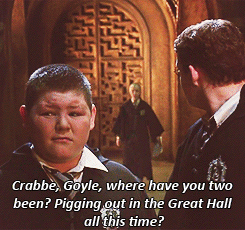
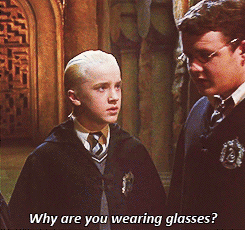
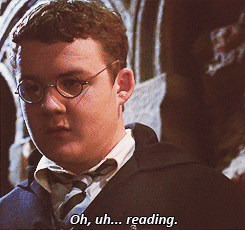

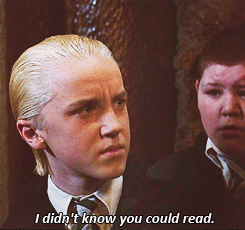
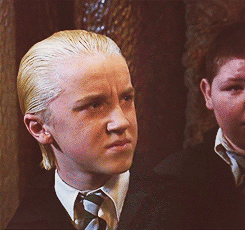










The fight is not over.
follow @the-movemnt
Webb 101: 10 Facts about the James Webb Space Telescope
Did you know…?

1. Our upcoming James Webb Space Telescope will act like a powerful time machine – because it will capture light that’s been traveling across space for as long as 13.5 billion years, when the first stars and galaxies were formed out of the darkness of the early universe.

2. Webb will be able to see infrared light. This is light that is just outside the visible spectrum, and just outside of what we can see with our human eyes.

3. Webb’s unprecedented sensitivity to infrared light will help astronomers to compare the faintest, earliest galaxies to today’s grand spirals and ellipticals, helping us to understand how galaxies assemble over billions of years.

Hubble’s infrared look at the Horsehead Nebula. Credit: NASA/ESA/Hubble Heritage Team
4. Webb will be able to see right through and into massive clouds of dust that are opaque to visible-light observatories like the Hubble Space Telescope. Inside those clouds are where stars and planetary systems are born.

5. In addition to seeing things inside our own solar system, Webb will tell us more about the atmospheres of planets orbiting other stars, and perhaps even find the building blocks of life elsewhere in the universe.

Credit: Northrop Grumman
6. Webb will orbit the Sun a million miles away from Earth, at the place called the second Lagrange point. (L2 is four times further away than the moon!)

7. To preserve Webb’s heat sensitive vision, it has a ‘sunshield’ that’s the size of a tennis court; it gives the telescope the equivalent of SPF protection of 1 million! The sunshield also reduces the temperature between the hot and cold side of the spacecraft by almost 600 degrees Fahrenheit.

8. Webb’s 18-segment primary mirror is over 6 times bigger in area than Hubble’s and will be ~100x more powerful. (How big is it? 6.5 meters in diameter.)

9. Webb’s 18 primary mirror segments can each be individually adjusted to work as one massive mirror. They’re covered with a golf ball’s worth of gold, which optimizes them for reflecting infrared light (the coating is so thin that a human hair is 1,000 times thicker!).

10. Webb will be so sensitive, it could detect the heat signature of a bumblebee at the distance of the moon, and can see details the size of a US penny at the distance of about 40 km.

BONUS! Over 1,200 scientists, engineers and technicians from 14 countries (and more than 27 U.S. states) have taken part in designing and building Webb. The entire project is a joint mission between NASA and the European and Canadian Space Agencies. The telescope part of the observatory was assembled in the world’s largest cleanroom at our Goddard Space Flight Center in Maryland.
Webb is currently being tested at our Johnson Space Flight Center in Houston, TX.

Afterwards, the telescope will travel to Northrop Grumman to be mated with the spacecraft and undergo final testing. Once complete, Webb will be packed up and be transported via boat to its launch site in French Guiana, where a European Space Agency Ariane 5 rocket will take it into space.

Learn more about the James Webb Space Telescope HERE, or follow the mission on Facebook, Twitter and Instagram.
Make sure to follow us on Tumblr for your regular dose of space: http://nasa.tumblr.com.

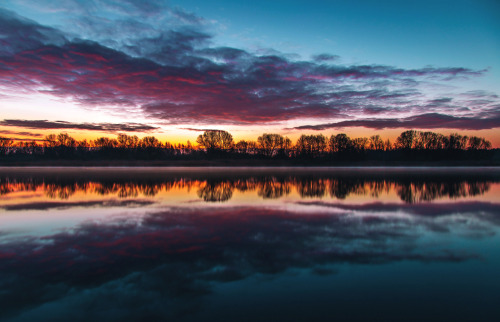
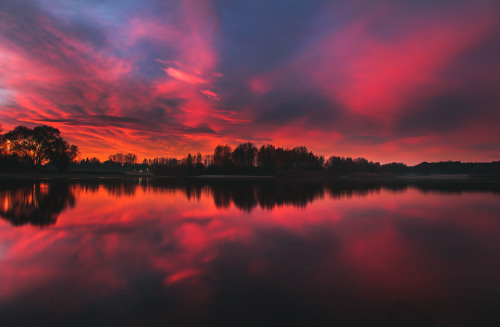

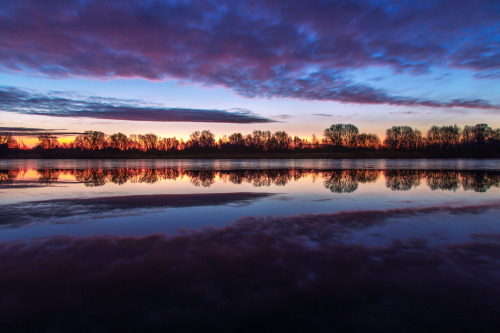
winter sunrise reflections
by Denny Bitte


Fluid systems can sometimes serve as analogs for other physical phenomena. For example, bouncing droplets can recreate quantum effects and a hydraulic jump can act like a white hole. In this work, a bathtub vortex serves as an analog for a rotating black hole, a system that’s extremely difficult to study under normal circumstances. In theory, the property of superradiance makes it possible for gravitational waves to extract energy from a rotating black hole, but this has not yet been observed. A recent study has, however, observed superradiance for the first time in this fluid analog.
To do this, the researchers set up a vortex draining in the center of a tank. (Water was added back at the edges to keep the depth constant.) This served as their rotating black hole. Then they generated waves from one side of the tank and observed how those waves scattered off the vortex. The pattern you see on the water surface in the top image is part of a technique used to measure the 3D surface of the water in detail, which allowed the researchers to measure incoming and scattered waves around the vortex. For superradiance to occur, scattered waves had to be more energetic after interacting with the vortex than they were before, which is exactly what the researchers found. Now that they’ve observed superradiance in the laboratory, scientists hope to probe the process in greater detail, which will hopefully help them observe it in nature as well. For more on the experimental set-up, see Sixty Symbols, Tech Insider UK, and the original paper. (Image credit: Sixty Symbols, source; research credit: T. Torres et al., pdf; via Tech Insider UK)

The Poplar Avenue at Moret, Cloudy Day, Morning via Alfred Sisley
Size: 59x73 cm Medium: oil on canvas

Theodore Isaac Rubin, American Psychiatrist (via books-n-quotes)
Have you considered that if you don’t make waves, nobody including yourself will know that you are alive?
-
 hufflepottercake liked this · 3 years ago
hufflepottercake liked this · 3 years ago -
 lesbianswords-blog liked this · 4 years ago
lesbianswords-blog liked this · 4 years ago -
 masherbrum liked this · 5 years ago
masherbrum liked this · 5 years ago -
 superprunecolorstudent liked this · 5 years ago
superprunecolorstudent liked this · 5 years ago -
 autumnrose-95 liked this · 7 years ago
autumnrose-95 liked this · 7 years ago -
 new-girl727 liked this · 7 years ago
new-girl727 liked this · 7 years ago -
 polychromatic-rue-blog liked this · 7 years ago
polychromatic-rue-blog liked this · 7 years ago -
 gabriel1859 liked this · 7 years ago
gabriel1859 liked this · 7 years ago -
 sylo978 liked this · 7 years ago
sylo978 liked this · 7 years ago -
 nastinais-blog liked this · 7 years ago
nastinais-blog liked this · 7 years ago -
 hoteats-cooltreats liked this · 7 years ago
hoteats-cooltreats liked this · 7 years ago -
 emmiesmith reblogged this · 7 years ago
emmiesmith reblogged this · 7 years ago -
 adventuresong reblogged this · 7 years ago
adventuresong reblogged this · 7 years ago -
 pianoandstudy liked this · 8 years ago
pianoandstudy liked this · 8 years ago -
 redrose32love liked this · 8 years ago
redrose32love liked this · 8 years ago -
 mybeachyear liked this · 8 years ago
mybeachyear liked this · 8 years ago -
 pavillion567 liked this · 8 years ago
pavillion567 liked this · 8 years ago -
 health-y-life reblogged this · 8 years ago
health-y-life reblogged this · 8 years ago -
 healthyhabitshealthylife reblogged this · 8 years ago
healthyhabitshealthylife reblogged this · 8 years ago -
 kateistrying reblogged this · 8 years ago
kateistrying reblogged this · 8 years ago -
 oahu-mahalo liked this · 8 years ago
oahu-mahalo liked this · 8 years ago -
 willie8705 liked this · 8 years ago
willie8705 liked this · 8 years ago -
 regular-ana reblogged this · 8 years ago
regular-ana reblogged this · 8 years ago -
 shellyburping reblogged this · 8 years ago
shellyburping reblogged this · 8 years ago -
 fit-since-today reblogged this · 8 years ago
fit-since-today reblogged this · 8 years ago -
 spiritedrunner reblogged this · 8 years ago
spiritedrunner reblogged this · 8 years ago -
 landershardin liked this · 8 years ago
landershardin liked this · 8 years ago -
 inspiretofitness reblogged this · 8 years ago
inspiretofitness reblogged this · 8 years ago -
 healthiiness reblogged this · 8 years ago
healthiiness reblogged this · 8 years ago -
 healthybodystrongmind reblogged this · 8 years ago
healthybodystrongmind reblogged this · 8 years ago -
 bernie-the-man liked this · 8 years ago
bernie-the-man liked this · 8 years ago -
 chasing-excellence reblogged this · 8 years ago
chasing-excellence reblogged this · 8 years ago -
 samsoninthestars reblogged this · 8 years ago
samsoninthestars reblogged this · 8 years ago